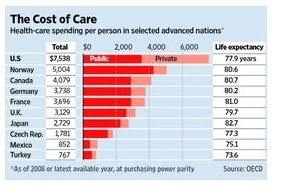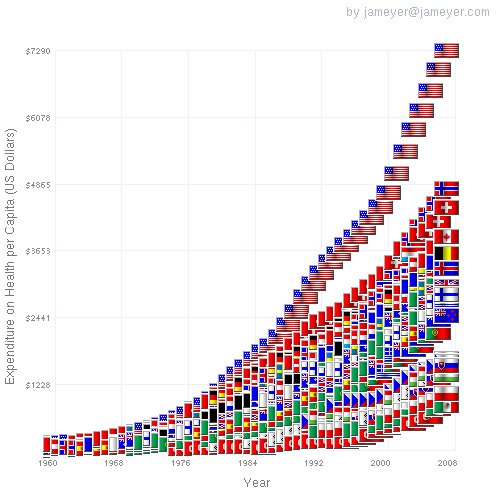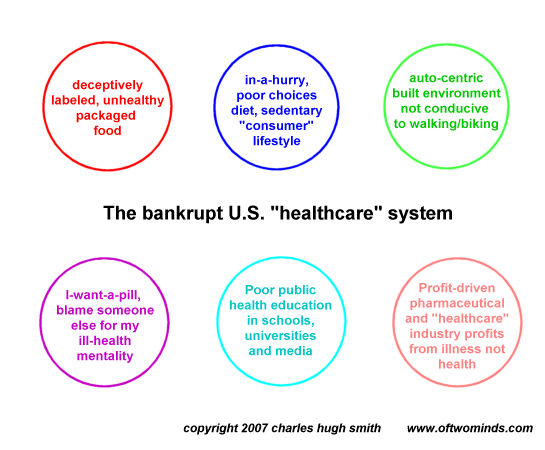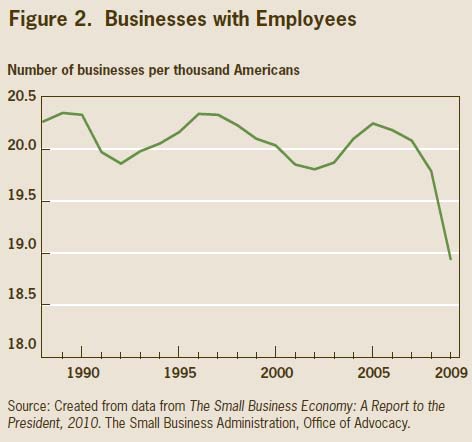Following yesterday’s latest Taper Tantrum, it was critical to get a smattering of bad global overnight news to provide the ammunition for the algos that not all in the world is fine and the easy monetary policy will continue indefinitely pushing stocks ever higher at the expense of the global economy. Sure enough first China, and then Europe complied, following the biggest China Flash PMI miss and drop in 6 months, followed shortly thereafter by a miss and a drop in the Eurozone Composite PMI down from 51.9 to 51.5, below expectations of an increase to 52.0, primarily on the back of a decline in the Service PMI from 51.6 to 50.9, with 51.9 expected even as the Mfg PMI rose modestly from 51.3 to 51.5. The country breakdown showed a significant deterioration in France and an improvement in Germany.
This is broken down in the chart below:


But the biggest overnight driver by a wide margin was the Yen, which tumbled nearly 100 pips and the USDJPY hit an overnight high of just over 100.90, which pushed the Nikkei up by almost 2%, and kept the futures well bid. However, what has confused algos in recent trading is the expected denial by Draghi of a negative interest rate, which while good for the EURJPY that drives the ES, what is the flipside is that this means less easing by the ECB, and thus interpreting the data does not result in a clear BTFD signal. Which may be a problem because should stocks close red today it will be the first 4 day drop in who knows how long.
Looking at the day ahead, the US data calendar features initial jobless claims, PPI and the Philly Fed survey. Elsewhere the Senate Banking Committee has scheduled a vote today on the nomination of Janet Yellen to be the next Fed chair. Democrats hold a two-vote lead on the 22-member committee. The Fed’s Bullard speaks again today, together with Lacker and Powell.
Overnight headline bulletin from Bloomberg and Ran:
- Euribor curve reversed some of the bull flattening observed yesterday following reports that the ECB said to weigh -0.1% deposit rate if more easing needed, with Draghi today stating that negative rates discussed in last meeting and no news since then. EUR also benefited from the latest comments by the head of the central bank.
- RBA Stevens said that the RBA remains open-minded on currency intervention.
- USD/JPY continues to test 101.00 level, supported by favourable interest rate differential flows and comments by BOJ’s Kuroda who said that the BOJ has room to conduct more easing.
- Stocks traded lower in Europe this morning as market participants reacted to the release of the FOMC meeting minutes and also digested the release of somewhat mixed Eurozone PMI data.
- Treasuries little changed, 10Y yield highest since mid-September, 2/10 steepest since August after Fed minutes yesterday signaled tapering possible “at next few meetings.”
- Pimco predicts 10Y yields will be capped near 3% into 2015 even with the Fed beginning to trim asset purchases as early as January
- Euro-area manufacturing expanded for a fifth month in November, while Chinese factory output growth cooled; Germany’s PMI manufacturing 52.5 vs 52 est., services 54.5 vs 53 est.
- A measure of new orders at U.K. factories rose to the highest in almost two decades in November and expectations for the next three months improved, the Confederation of British Industry said
- The Bank of Japan will need to postpone the time-frame for achieving a 2% inflation target as it refrains from enlarging its asset-purchase program, economists forecast in a Bloomberg News survey
- States and insurers are hoping to bypass the troubled Obamacare exchanges, a sign of skepticism that the Obama administration will meet its goal by the end of November to fix the technical problems plaguing the web site
- If they miss the deadline, millions of Americans may find themselves without health insurance next year.
- Sovereign yields higher, EU peripheral spreads tighten. Japan stocks higher while other Asian markets decline; Asian stocks excluding China, European stocks fall, U.S. equity-index futures gain. WTI crude, copper lower; gold gains
Main US events:
- US: Initial jobless claims, cons 335k (14:30)
- US: Fed’s Powell (15:45), Lacker (18:30), Bullard (19:00)
Market Recap from RanSquawk
Stocks traded lower this morning as market participants reacted to the release of the FOMC meeting minutes and also digested the release of somewhat mixed Eurozone PMI data. Still, as the session progressed, stocks managed to move off their worst levels, with flows into riskier assets encouraged by lower trading bonds and also comments by Merkel who said that Europe needs to boost growth. Nevertheless, US equity futures have outperformed their European counterparts, with some of the outperformance attributed to analysts at GS who stated that the S&P 500 will rise 6% and reach 1900 at year-end 2014 and that US GDP growth will accelerate to 3% in 2014. In other news, even though the BoJ voted unanimously to keep monetary policy unchanged, the Nikkei 225 index advanced to its highest level since May 23rd, supported by broad based JPY weakness which stemmed from favourable interest rate differential flows. The move higher by the pair and the domestic stock index was also aided by the latest foreign investors’ net buying data of Japanese equities which jumped to some USD 13bln worth last week, the biggest amount in seven months. Of note, AUD came under broad based selling pressure this morning, with AUD/USD breaking below the 100DMA line in the process after RBA’s Stevens said that the RBA remains open-minded on currency intervention. Going forward, market participants will get to digest the latest weekly jobs report, PPI and also Philadelphia Fed Business Outlook reports.
Asian Headlines
The BoJ votes unanimously to keep monetary policy unchanged; BoJ’s Kiuchi proposed ending 2% target in mid-term to long term; proposal defeated by 8-1 vote. The BoJ said will make policy adjustments as needed will ease until 2% inflation is stable and expects Japan’s moderate recovery going forward. They added that uncertainties remain high for Japan’s economy and Japan CPI is likely to rise gradually. This morning, BOJ’s Kuroda said that the BOJ has room to conduct more easing and to adjust policy without hesitation as needed.
Chinese HSBC Manufacturing PMI (Nov) M/M 50.4 vs. Exp. 50.8 (Prev. 50.9); New Export Orders (Nov) 49.4 (Prev. 51.3); 3 month low.
– HSBC economist Hongbin Qu said China’s growth momentum softened a little in November, as the HSBC Flash China
Manufacturing PMI moderated due to the weak new export orders and slowing pace of restocking activities.
Goldman Sachs also raises China 2014 GDP forecast to 7.8% from 7.7%; raises India 2014 GDP growth forecast to 5.5% from 5.4%. Goldman Sachs upgrades China and Taiwan stocks to overweight adding that the MSCI AXJ is to gain 13% in dollar terms in 2014.
EU & UK Headlines
ECB’s Draghi says negative rates discussed in last policy meeting and no news since then.
– ECB did not act because it sees deflation risk materializing in Euro area, still expects inflation to return gradually to levels below but close to 2%.
– One concern is effect of rate cut on some countries.
– Is aware rate cut has raised some concerns.
– ECB cut rates to restore appropriate safety margins.
Eurozone Composite PMI (Nov A) M/M 51.5 vs Exp. 52.0 (Prev. 51.9)
Eurozone Serv
ices PMI (Nov A) M/M 50.9 vs Exp. 51.9 (Prev. 51.6)
Eurozone Manufacturing PMI (Nov A) M/M 51.5 vs Exp. 51.5 (Prev. 51.3)
German Services PMI (Nov A) M/M 54.5 vs Exp. 53.0 (Prev. 52.9)
German Manufacturing PMI (Nov A) M/M 52.5 vs Exp. 52.0 (Prev. 51.7)
French Services PMI (Nov P) M/M 48.8 vs Exp. 51.0 (Prev. 50.9) – 4 month low
French Manufacturing PMI (Nov P) M/M 47.8 vs Exp. 49.5 (Prev. 49.1) – 6 month low
France and Spain successfully tapped markets this morning, both selling at the top end of expected range. The DMO also sold GBP 4.75bln of 1.75% 2019 Gilt which led to immediate weakness given the lacklustre bidding data and higher than prev. tail.
UK CBI Trends Total Orders (Nov) M/M 11 vs Exp. 1 (Prev. -4) – Highest since 1995.
UK Public Sector Net Borrowing (Oct) M/M 6.4bln vs Exp. 5.1bln (Prev. 9.4bln, Rev 8.6bln) – UK budget deficit narrows as sales taxes and stamp duty increase.
– UK Public Finances (PSNCR) (Oct) M/M -16.8bln vs Prev. -0.6bln (Rev. -0.5bln)
– UK PSNB ex Interventions (Oct) M/M 8.1bln vs Exp. 7.5bln (Prev. 11.1bln, Rev. 10.3bln)
Barclays month-end extensions: Sterling Aggr (+0.06y)
Barclays month-end extensions: Euro Aggr (+0.04y)
US Headlines
Analysts at GS who stated that the S&P 500 will rise 6% and reach 1900 at year-end 2014 and that US GDP growth will accelerate to 3% in 2014. Also, buybacks and dividends will grow by 25% to USD 960bln and account for 45% of cash usage by S&P 500 firms in 2014, the highest share since 2007.
PIMCO’s Crescenzi sees 10y Treasury Yield near 3% and a Fed taper by March.
Barclays month-end extensions: Treasuries (+0.10y) – Of note, although the avg. is around 0.06y, larger than avg. increase had been expected given the 3y, 10y and 30y refunding auctions last week.
Equities
The positive sentiment that was evident overnight in Asia which also saw the Nikkei 225 index finish up at its highest level since May 23rd failed to carry over into the European session, where stocks traded lower as markets reacted to the FOMC minutes and mixed EU PMIs. The cautious sentiment supported the more defensive sectors, with health care and utilities outperforming. On a more positive note, analysts at Goldman Sachs stated that buybacks and dividends will grow by 25% to USD 960bln and account for 45% of cash usage by S&P 500 firms in 2014, the highest share since 2007.
Goldman Sachs FX-trading revenue has fallen during Q3 following a wrong-way bet in the FX market for USD/JPY, press reports indicated that the bank lost more than USD 1bln on currency trades during the third quarter.
FX
USD/JPY advanced to its highest level since early July, supported by favourable interest rate differential flows as market participants reacted to the release of the latest FOMC meeting minutes which noted that Fed taper is likely in coming months on better data and that most FOMC members said that IOER cut could be worth considering. AUD came under broad based selling pressure this morning, with AUD/USD breaking below the 100DMA line in the process after RBA’s Stevens said that the RBA remains open-minded on currency intervention. Despite the aggressive selling pressure, the move lower failed to erase touted 0.9250 barrier level. Consequent AUD weakness saw EUR/AUD move above its 100DMA line and to its highest level since late October, which when combined with firmer trading EUR/JPY cross ensured that despite mixed EU PMIs, EUR/USD moved back to unchanged on the session.
Commodities
Iran and world powers have ended their first session after less ten minutes, however, ‘this was just a brief introductory session’ according to one diplomat in Geneva. It was later reported by an Iranian negotiator that talks are now entering a critical phase.
According to an Iranian news agency, paramilitary forces have concluded their maneuvers on an island near the strategic oil tanker shipping lanes through the Strait of Hormuz.
BofAML sees oil prices curbed by a stronger USD and weaker growth.
Libya’s crude output expected at 250,000 bpd tomorrow with the nations EL Feel oil field at full output tomorrow of 83,000 bpd according to a NOC spokesman.
China refined copper imports up 26.85% Y/Y at 292,620 tonnes according to customs. October refined copper exports up 14.39% Y/Y at 14,601 tonnes.
October primary aluminium exports up 112.32% Y/Y at 9,296 tonnes. Primary aluminium imports up 1.79% Y/Y at 49,789 tonnes. Refined zinc imports up 125.6% Y/Y at 74,391 tonnes. Refined nickel and alloy imports down 12.66% Y/Y at 15,315 tonnes.
Russian Gold and Forex Reserve (Nov 15) W/W 507.7bln vs Prev. 510.8bln.
China September gold output at 37.642 tons, according to China gold association.
SocGen’s recap of key macro and FX events:
It didn’t take much for the EUR and euribor futures to respond to the headline that the ECB is considering a “mini deposit rate-cut” if more easing is needed. The central bank described inflation risks as “balanced” after the refi rate cut to 0.25% last month so unless it feels it is underestimating the downside pressure on prices in the December forecasts, a deposit rate cut should not be imminent. The amount banks have on deposit with the ECB has dropped from over EUR800bn at the peak in 2012 to EUR43.8bn as of last week. The minutes of the Fomc meeting released yesterday stated that tapering could happen at one of the next few meetings, though as ever the timing will be dependent on better data (our call is March-14). Most Fomc participants said a cut in the IOER could be worth considering. The USD strengthened across the board in Asia with USD/JPY motoring to a 100.85 high and 10y swaps reaching 2.86%.
The door to lower deposit rate in the euro area has been wide open since the early summer and technically the ECB has assured us that it is technically ready to deploy this weapon. Given the discord on the governing council, it is perhaps the highest and realistically achievable as the central bank digs deeper into its emergency toolbox. How potent a mini deposit rate cut to -0.10% from 0.00% turns out to be (for the EUR and the economy) may emerge right before we cross that bridge if overseas money market funds reduce their EUR denominated security holdings. But so far, the price action suggests it is the only tool that is genuinely striking fear into the heart of EUR bulls. The remarks on the deposit rate were sourced to two people with “official knowledge of the debate” and this now ostensibly puts the onus on the speech of ECB president Draghi at 11:00 cet in Berlin (attended by German Chancellor Merkel). Without the central bank jawboning, and despite a stronger than expected start to Q4 for US retails sales, EUR/USD would have logged an eight successive day of gains yesterday. The outside day after a close below 1.3488 constitutes a sell signal. Short-term support runs at 1.3383/75.
Flash eurozone PMI data are forecast to show small declines in manufacturing and services activity in November, though the indices should stay comfortably above the 50-level signalling expansion. Spain will auction 2017 benchmark paper and France is preparing to sell 2016 and 2018 OATs. US data today are forecast to show a fall in initial claims to 335k, whilst annual PPI inflation is expected to have stayed unchanged at 0.3%. A drop to 15.0 from 19.8 is pencilled in for the Philly Fed survey.
DB’s Jim Reid concludes the overnight recap:
Markets skidded a little yesterday as the late US session yesterday proved that the taper does matter, the only debate for markets is really how much it matters. The S&P 500 dropped around 10 points (close -0.36%) after the latest FOMC minutes were perhaps on the hawkish side as it was difficult to rule out the December taper on the streng
th of what was released. Indeed the committee openly discussed how they “could decide to slow the pace of purchases at one of its next few meetings.” As DB’s Joe Lavorgna points out, at the time of the meeting payrolls appeared to be losing some momentum with September at just 148k, and with concerns about the economic consequences of the government shutdown. So they now have arguably less to worry about than they did at this meeting. We still think they won’t taper until March at the earliest but Joe thinks the strong payroll number that he expects in 2 weeks could be enough to pull the trigger. It will be a fascinating run up to Christmas. To taper ahead of YE would likely be negative for markets as there hasn’t been enough consistently strong data for markets to calmly accept a handover from the huge external support to organic growth. As we said we don’t think it happens and therefore markets will probably be higher/tighter at year end but it’s a closer call than it was 2 weeks ago.
Aside from the tapering debate, the FOMC minutes revealed that the Fed continues to grapple with strengthening forward guidance as a means of driving a psychological wedge between QE tapering and eventual rate hikes. But despite all the recent talk of lowering the unemployment threshold for rate hikes, it was somewhat surprising that only “a couple of participants” favoured reducing the 6.5% threshold. Indeed a number of other participants raised concerns about what a move would do in terms of market perceptions of the durability of the FOMC’s commitment to the thresholds. There was also some discussion about setting a quantitative floor for inflation, under which the Fed would not hike rates, but again the benefits of doing this were considered “uncertain and likely to be rather modest”. The Committee also discussed a reduction of interest on excess reserves as a means of signalling lower-forlonger, but the benefits were judged to be “small”. So for now it seems we are left with Yellen/Bernanke’s assurances that Fed policy will remain accommodative for some time to come even after QE begins to moderate, and that rate hike thresholds are not necessarily triggers for action.
As alluded to above, markets hit a bit of turbulence late in the US session but it was also interesting to see the 7bp selloff in 10yr UST yields in the several hours prior to the release of FOMC minutes. It’s not exactly clear what drove this but the Twitter-sphere was awash with talk of a “bombshell” in the FOMC minutes – which didn’t eventuate. The +12bp intraday move (+9bp on the day) in UST yields was almost as large in magnitude as the +15bp selloff following the bumper October payrolls report two Fridays ago. LATAM EM did predictably poorly as the UST selloff took hold, and EM credit spreads closed at the wides. US credit held in reasonably well but Gold dropped 2.5% and we’re currently not too far away (around 4%) from retesting the June lows of $1200/oz. The stronger dollar drove some of the weakness in EURUSD (-0.73%) but a Bloomberg report suggesting that the ECB was weighing a negative deposit rate was responsible for much of the drop. The Bloomberg report did not contain too much other detail and cited two anonymous ECB sources. But it does come after a lot of recent public commentary from ECB officials suggesting additional stimulus is a policy option. Talk of negative interest rates wasn’t just confined to the ECB yesterday. The Fed’s Bullard, who is considered a bit of a bellwether on the FOMC, commented that he would like to study the possibility of negative rates on reserves as an incentive to stimulate bank lending. Bullard also mentioned that a December taper was definitely on the table if we get a strong November jobs report.
Turning to Asia, this month’s global flash PMIs have gotten off to a softer start following a weaker-than-expected Chinese HSBC manufacturing PMI (50.4 vs 50.8). It’s the first month-on-month drop in the China HSBC PMI in five months but the running three-month average 50.5 is still the highest level since April 2013. Though most Asian equities have reacted negatively to the PMI, Japanese equities are outperforming today (Nikkei +1.6%) after a Japanese government panel recommended that the country’s $1.2trillion Government Pension Investment Fund should diversify its portfolio to more aggressive investments. USDJPY is up 0.4% today. The Bank of Japan policy meeting was pretty much in line with market expectations and the Nikkei and USDJPY were unchanged following the announcement.
Looking at the day ahead, flash Euroarea PMIs will be setting the tone early today. Consensus is expecting a small pickup in both manufacturing and service PMIs including in France where there has been some concern of late. Merkel and Draghi will be speaking in Berlin at a conference. Draghi’s speech is titled. “Strategies for more growth”. The US data calendar features initial jobless claims, PPI and the Philly Fed survey. Elsewhere the Senate Banking Committee has scheduled a vote today on the nomination of Janet Yellen to be the next Fed chair. Democrats hold a two-vote lead on the 22-member committee. The Fed’s Bullard speaks again today, together with Lacker and Powell.






via Zero Hedge http://feedproxy.google.com/~r/zerohedge/feed/~3/VvdkCG2tT9A/story01.htm Tyler Durden



![]()























